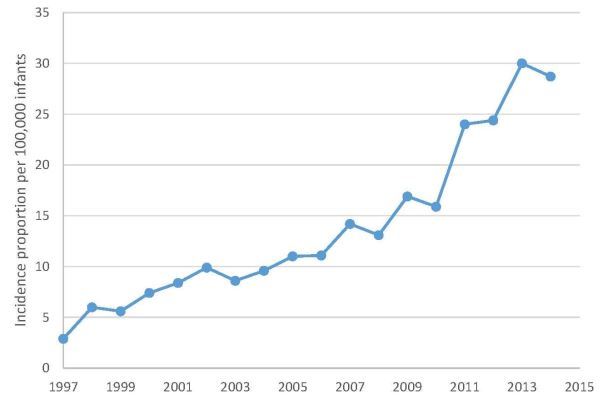Rickets in Sweden recently increased by 6X (mainly preemies)
Population-based register study of children born in Sweden from 1997-2014 showed an increase in rickets during infancy.
Acta Paediatr. 2019 May 3. doi: 10.1111/apa.14835
Högberg U1, Winbo J2, Fellman V3,4.
📄 Download the PDF from VitaminDWiki

AIM: This population-based study assessed the incidence of rickets in infants up to age of one born in Sweden from 1997-2014. We also examined maternal and perinatal factors and co-morbidity.
METHODS: We used Swedish National Board of Health and Welfare registers and data from Statistics Sweden. The outcome measure was an International Classification of Diseases, Tenth Revision, code for rickets.
RESULTS:
There were 273 cases of rickets, with an incidence of 14.7 per 100,000 and a 10-fold incidence increase between 1997-2014. The majority (78.4%) were born preterm, half were small-for-gestational age (SGA) (birthweight <10th percentile), 4.8% were born to Asian-born mothers and 3.5% to African-born mothers.
The adjusted odds ratios by birth week were
182 (95% CI 121-272) before 32 weeks (62%)
10.8 (95% CI 6.72-17.4) by 32-36 weeks. (11%)
Preterm infants with necrotising enterocolitis had very high odds for rickets and so did SGA term born infants and those born to African-born mothers. The odds for rickets among preterm infants increased considerably during the later years.
CONCLUSION:
Rickets increased 10-fold in Sweden from 1997-2014 and was mainly associated with prematurity, SGA and foreign-born mothers. Possible reasons may include increased preterm survival rates and improved clinical detection and registration. This article is protected by copyright. All rights reserved.
